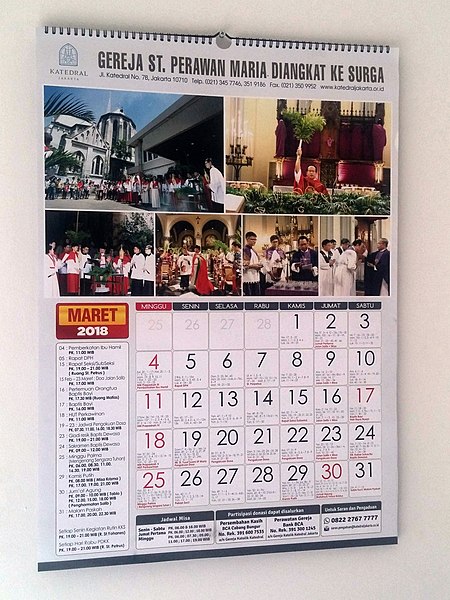The Gregorian calendar is the calendar used in most parts of the world. It went into effect in October 1582 following the papal bull Inter gravissimas issued by Pope Gregory XIII, which introduced it as a modification of, and replacement for, the Julian calendar. The principal change was to space leap years differently so as to make the average calendar year 365.2425 days long, more closely approximating the 365.2422-day 'tropical' or 'solar' year that is determined by the Earth's revolution around the Sun.
Christopher Clavius (1538–1612), one of the main authors of the reform
Pope Gregory XIII, portrait by Lavinia Fontana, 16C
First page of the papal bull Inter gravissimas
Detail of the pope's tomb by Camillo Rusconi (completed 1723); Antonio Lilio is genuflecting before the pope, presenting his printed calendar.
A calendar is a system of organizing days. This is done by giving names to periods of time, typically days, weeks, months and years. A date is the designation of a single and specific day within such a system. A calendar is also a physical record of such a system. A calendar can also mean a list of planned events, such as a court calendar, or a partly or fully chronological list of documents, such as a calendar of wills.
Modern day Indonesian Gregorian calendar for a Catholic church
British calendar, 1851, gilt bronze and malachite, height: 20.3 cm, Metropolitan Museum of Art (New York City)
Equinox seen from the astronomic calendar of Pizzo Vento at Fondachelli Fantina, Sicily
Catalan early 20th century perpetual calendar








